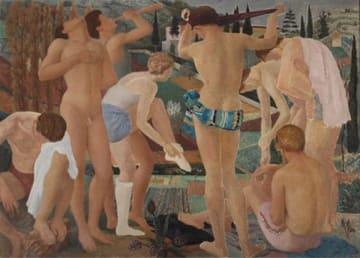
Onofrio Martinelli
SOLD
Provenance
Florence, private collectionExhibitions
1937, Florence, Concorso Bianchi; 1968, Bari, Pinacoteca Provinciale; 1969, Florence, Palazzo Strozzi; 1986, Milan, Palazzo della Permanente.
Literature
P. Belli D’Elia, Molfetta 1968, p. 8 (Pozzo dei Giganti); C. Vivaldi, Rome 1968, p. 17, no. 30; A. Parronchi, Florence 1970, p. 27 (1937); R. De Grada, Florence 1970, p. 12, plate LIV.; G. Uzzani, Milan 1992, tome I, p. 422, fig. 591; General catalogue, Milan 1998, p. 21, 23 – 24, 89, plate p. 132; S. De Rosa, Florence 2000, p. 70-71
Painting was the single great passion of this artist from the Apulia region of Italy. Indeed, in 1921, Martinelli abandoned his engineering studies in Rome and began to spend time with the painters Felice Carena and Giovanni Colacicchi. In 1926, he moved to Paris to enter the studio of the painter Filippo De Pisis and joined the first group of “Peintres italiens de l'École de Paris” in which Giorgio De Chirico was already working. With De Pisis, with whom he shared both a Parisian studio and apartment, Martinelli created a firm friendship and an important artistic empathy. It was thanks to De Pisis that, from this moment on, his artistic journey really started to take off, leading him to artistic maturity.
In 1931, he returned to Italy: this was a moment of great stylistic affinity with Colacicchi and the other exponents of the “Scuola Romana”. Here Martinelli focused on the theme of compositions with figures, and in the environs of the young Roman painters – known also as “Tonalists” – the most heated discussions entwined and the most daring solutions were sought. The masterpieces of his artistic maturity belong to this phase, such as Composizione di nudi (Fig. 1) and the work presented here I Giganti.

Fig. 1- Composizione di nudi, 1938-39, Oil on canvas, 140 x 190 cm, Bari, Amministrazione provinciale
A necessary premise to understand the artist’s work is that, for Martinelli, painting was inconceivable without a solid background in art history. Martinelli was extremely cultured in history and art and his works are steeped in ancient and modern citations, tastefully measured, and blended according to a precise mental order. He saw art as a means of expressing his own thoughts, a linguistic nexus that contained codes and quotes perceptible to an expert’s eye.
In this sense, I giganti can be considered Martinelli’s most complex and challenging work. The artist created this impressive canvas for the 1937 edition ofthe “Gaetano Bianchi Competition”, on the theme of the Divine Comedy, taking as a model one of the major cycles of illustrations of the Divine Comedy:the famous engravings of Sandro Boccicelli Botticelli. (Fig. 2). To the 15th-century approach to lines and signs, Martinelli added strong drama and emotional impact through a palette of intense, contrasting colours, the sheer power of the figures, and an intense narrative.
In fact, I Giganti symbolizes the artist’s entire complex personality in the transfiguration of the myth. Because of the sense of unrest it conveys, this work has been interpreted as a metaphorical harbinger of the impending world conflict. The painting attracted much critical attention and appreciation, but for the selection of the competition it was considered “off-topic”.

Fig. 2- Sandro Botticelli, Illustrazione de La Divina Commedia, Inferno, Canto XXXI. Berlin, Kupferstichkabinett
Join the mailing list
Subscribe to our newsletter to receive all the news about exhibitions, fairs and new acquisitions!